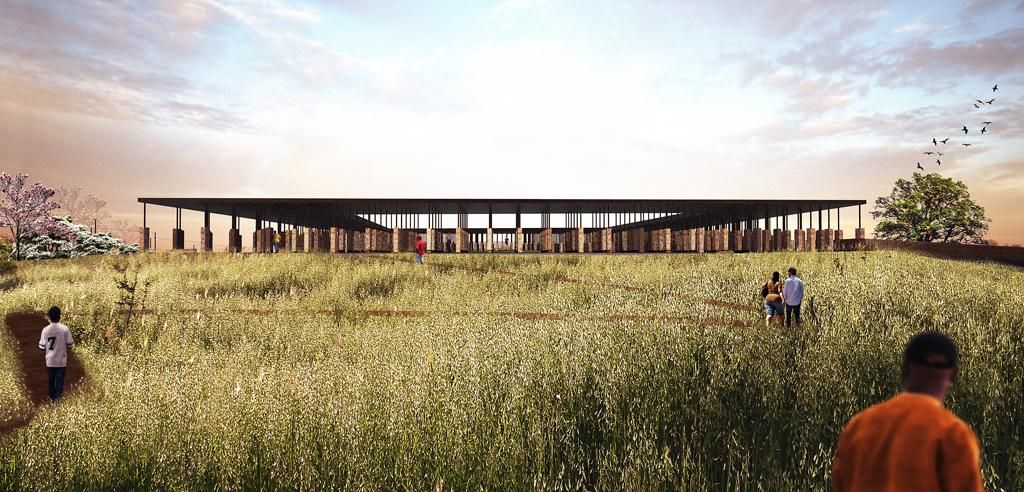Inside the Upcoming Memorial and Museum Dedicated to Lynching Victims
Spanning slavery to segregation to mass incarceration
/https://tf-cmsv2-smithsonianmag-media.s3.amazonaws.com/filer/df/cb/dfcbf356-e471-477e-9cd6-04fac3567db4/from-enslavement-to-mass-incarceration.jpg)
The iconography of slavery and segregation can be found nearly everywhere in the United States, be it statues dedicated to prominent slave owners from history or government buildings built by slaves. But soon, a new monument and museum in Montgomery, Alabama, will directly confront some of the worst atrocities committed in American history by memorializing the thousands of black people who were lynched in the U.S.
According to a recent report by the nonprofit Equal Justice Initiative, between 1877 and 1950 more than 4,000 black Americans were lynched in the southern U.S. However, aside from a few notable cases, it’s unlikely that many Americans could put a name to many of these victims. But by fall 2017, the EJI hopes to change that by constructing a memorial to their memories.
“[W]e need to create a space to explore racial injustice,” Bryan Stevenson, EJI’s executive director, tells Smithsonian.com. “We wanted something that would speak to the devastation of lynching and the terror that it wrought.”
The Memorial to Peace and Justice will be the first to pay tribute to lynching victims in the country. Designed to evoke the image of a gallows, the memorial will contain more than 800 columns, each one symbolizing a county where a lynching took place and inscribed with the names of the victims. Copies of each column will surround the memorial in a park, but Stevenson hopes they won’t stay there—the EJI plans to challenge each county to claim the column that represents it and bring it home as a symbol of the history of racial violence in their community.
“You can’t really understand the Civil Rights Movement and segregation until you have an understanding of the terror of slavery,” Stevenson says. “The great evil wasn’t slavery, but the ideology of racial difference.”

In addition to the memorial, EJI is constructing a museum in its headquarters in Montgomery that will be dedicated to telling the story of racial bias in the U.S., from the earliest days of slavery through to modern mass incarceration. With exhibits including displays of slave auction notices and the iconography of segregation, the organization wants to show the psychological trauma that institutional racism has inflicted on Americans of color.
While EJI envisions both its memorial and museum to be solemn, sober memorials to the injustices that millions of Americans face in their daily lives, the organizers also want them to inspire people to actively work towards a more hopeful, equal society. As Stevenson says, only by actively confronting America’s history of racial injustice and violence can the country really begin to heal from its self-inflicted trauma.
“I think there’s a growing feeling of America in a state of transitional justice,” Stevenson says. “There has to be a period of truth and recognition, and we haven’t had that yet. I really do think there is a great space in this country to do hopeful work to help us recover from our history of racial inequality.”

